Russian icons are religious paintings that have been created and used in the Orthodox Christian tradition for centuries. They are an important part of Russian art and culture, and are recognized for their distinctive style and spiritual significance. Icons typically depict religious figures, such as Jesus Christ, the Virgin Mary, and saints, and are intended to serve as a means of connecting the viewer with the divine. The process of creating an icon involves a combination of artistic skill and religious devotion, and has been passed down through generations of iconographers. Russian icons have had a significant impact on the development of Western art and continue to be valued for their aesthetic and spiritual qualities.
The following resource was contributed by the The Museum of Russian Icons in Clinton, MA. It is intended to briefly introduce the reader to Russian iconography through five case study icons. Each is accompanied by a description and picture that you can click on and view a large, high quality scan of the icon that was made by the museum.
Briefly about Icons
Icon artists are not expected to be original, but instead replicate an “original” image as faithfully as they can. Therefore, it may seem that icons are repetitive. However, each work of art differs subtly from one to the next. Each generation of iconographers contributes to the steady and subtle development of the genre. Each geographical area, each era and each monastery has a distinctive style.
Icon painters (or writers as they are known) are usually anonymous; we do not know the names of many of the painters. Instead, icons are described by the regional style (where they were made) or the type of image they depict.
Over time, Russian icon artists developed many new images depicting specifically Russian regional saints, local monasteries, and historical Russian religious events in addition to the traditional images that came from the Greek Orthodox roots of icon painting.
Icons were displayed in every Russian household – and still are displayed in many households. From the powerful Czars, down to the poor, from local churches to the great Moscow and St. Petersburg cathedrals, the rich and poor all shared veneration for these richly decorated icons.
Icons are steeped in tradition. They have been created the same way for centuries. The front of the panel is covered with a smooth surface of gesso, a mixture of plaster and glue to strengthen the panel and to create a smooth surface for the painter to work on. The painting was done directly on this surface using egg tempera paint (egg yokes mixed with dyes and pigments). The artist brushed a hard, clear lacquer topcoat to protect the finished work. Icons usually warp inwards creating a bowed surface. This is caused over several decades by moisture being absorbed by the unprotected back of the icon. This is considered a sign of age, authenticity and beauty in icons.
Saint George, ca. 1500

This icon of Saint George and the dragon is one of the most famous icons in Russia, and this particular icon is 500 years old. According to legend, there was a terrible dragon living in a lake in Libya. The local people were pagans, and worshipped the dragon as a god. They made sacrifices to him as a god, and appeased him by giving him their children one by one. It came time for the daughter of Queen Elisiba to be sacrificed. Saint George appeared on a white horse, and with the words “In the name of the Father, the Son, and the Holy Spirit,” he charged the dragon and struck him with his lance, while his horse trampled on him.
Then Saint George told the young maiden to bind the dragon with her belt and lead him through town. In the town center, Saint George then slew the dragon with his sword. Since the dragon symbolized evil, the image of George slaying the dragon is considered a symbol of a heathen country being converted to Christianity. This was one of the most popular icons in early Christian and Byzantine painting. Saint George is the patron saint of Moscow.
Last Judgment, ca. 1650.
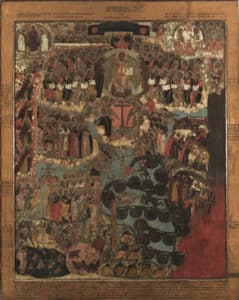
The Last Judgment icon is one of the largest icons ever produced in Russia. The iconography is quite complex, but basically it has Christ sitting in judgment of all of the people in the icon. You will see Christ up near the top, flanked on one side by Mary, Mother of God, and on the other side by John the Baptist. Christ is judging all of these people in accordance with the “sin worm,” which you’ll see in the lower part, with the black circles, and you’ll see the red head of the worm. Each circle has listed on it one of the sins that will be used in the judgment of the people. For instance, one of the circles has avarice, which is greed for money. Another one has spite, or evil thinking toward another person, and another one has voluptuousness, or enjoying sensual pleasures.
You will see right in the center of the icon a person seeming to hang from a hand, and that person is being judged by a scale, and you’ll see on your left that the angels are trying to put a little extra weight on the righteous side, and the devil is trying to put a little extra weight on the balance on his side. The righteous persons that are being judged will end up in Heaven, above the cloud that you see running horizontally across the icon in the center. The sinners will end up in the lower right corner, where it is bright red, and if you look closely you can see that there are already some sinners in that area.
You will see the apostles helping Christ make his judgment, six apostles sitting on either side of Christ, holding their books. Adam and Eve are also pictured. Adam is just below Mary, and Eve is just below John the Baptist. This is a very complex iconography with those on the right being judged – represented by some “daggers” coming from angels and other people (the red lines). On the other side, the righteous are being judged and expect to go to Heaven. Even dead people are also being judged, which you can see in the lower left corner of the icon.
Solovetsky Monastery, ca. 1680.
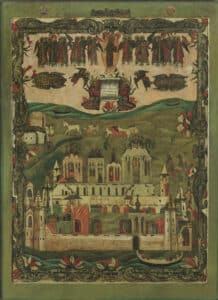
The Solovestky Monastery is located on the Arctic Circle in the far north of European Russia. It is one of the largest and one of the grandest of all of the monasteries in Russia. It was founded over 600 years ago by two monks, Saint Savvaty and Saint Zosima. They can be seen in the small icon next to the large one, holding a model of the monastery, and they can also be seen about two-thirds of the way up on the large icon.
The monastery was developed as a large castle, containing three churches dedicated to the Transfiguration of Christ, the Dormition of the Mother of God, and to Saint Nicholas. At the top of this icon you can see Christ with many angels. The large scale of this icon suggests that it probably hung in the monastery itself.
Znamenie Mother of God, ca. 1680.
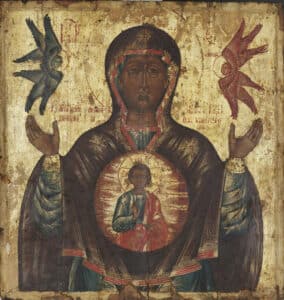
Znamenie is one of the 350 images of the Mother of God in Russian Orthodox religion. There is a legend behind this icon, and it is a Russian legend not found in the Bible. The army of Suzdal, which is a small town near Moscow, and which was an ancient capital of Russia, went to Novgorod (another town near Moscow) to fight a battle and armies of this time always carried icons into battle with them, in hopes that the Mother of God would provide a miracle.
So, the army of Novgorod carried this icon into battle. A Suzdal arrow hit the Mother of God image, and she began to cry, according to the legend. So the Novgorod army immediately said, “We must have the Mother of God on our side,” and they won the battle. This particular icon is highly venerated and is one of the most popular ones in Russia.
Minyeia Liturgical Year Calendar, ca. 1850.
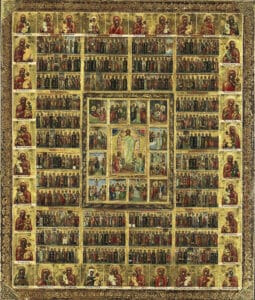
The Minyeia is another of the most popular icons in Russia. It’s a calendar icon of saints, and it starts with the upper quadrant, which is the month of September, and proceeds horizontally to the right. September, October, November, and December are pictured in the first row. Skipping down to the next row, it would be January, February, and so on. Pictured in each month are the saints of every day. The interesting thing in this icon is that they are so small that it’s almost impossible for you to see their faces and the names of every saint just above their heads. The iconography is truly spectacular.
About the Museum of Russian Icons
By Josh Wilson
The Museum of Russian Icons is a non-profit museum located in Clinton, Massachusetts, in the United States. It was founded in 2006 by Gordon Lankton, a businessman and philanthropist who had been collecting Russian icons for over 30 years. The museum’s collection includes over 1,000 Russian icons and related artifacts, dating from the 15th century to the present day.
The museum’s mission is to “engage the public in the rich artistic and spiritual traditions of Russia through the medium of icons.” It aims to promote an understanding of the role of icons in Russian culture and religion, as well as their artistic and historical significance.
The museum’s permanent collection includes icons from the medieval period to the 20th century. It includes icons made of wood, metal, and other materials, as well as examples of icon-related objects such as liturgical vessels and books. The collection also includes contemporary icons, created by Russian and American artists.
In addition to its permanent collection, the museum hosts temporary exhibitions, educational programs, and cultural events throughout the year. It also offers guided tours of its collection and educational resources for schools and community groups and hosts a Center for Icon Studies.
The museum building itself is a renovated mill building, which features a modern design that complements the traditional iconography.
You’ll Also Love
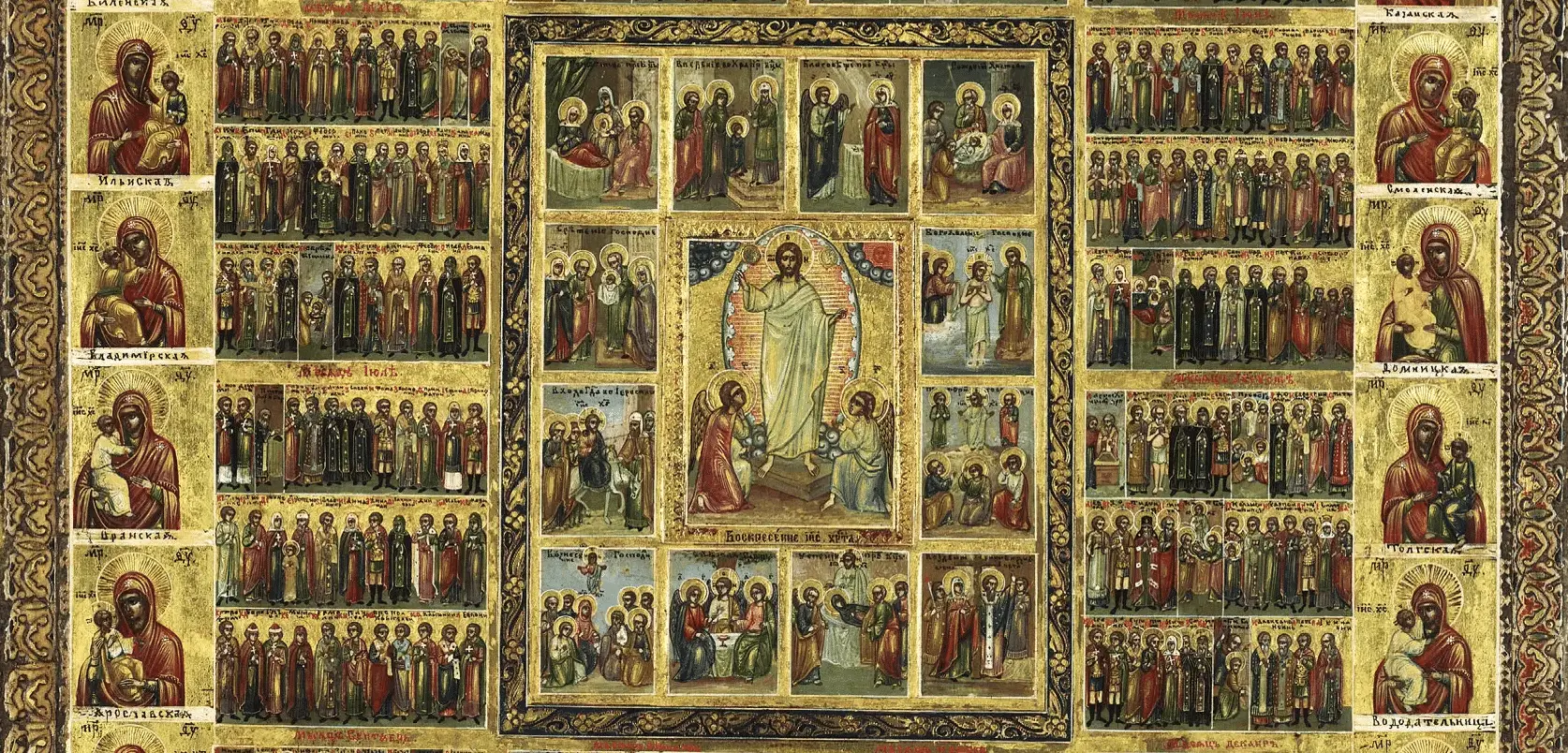
Russian Icons in Detail from The Museum of Russian Icons
Russian icons are religious paintings that have been created and used in the Orthodox Christian tradition for centuries. They are an important part of Russian art and culture, and are recognized for their distinctive style and spiritual significance. Icons typically depict religious figures, such as Jesus Christ, the Virgin Mary, and saints, and are intended […]

Krutitskoe Podvorye: A Hidden Gem of Moscow
If you’re feeling adventurous and are interested in visiting a less-traveled route through Moscow, I would suggest taking a trip to Krutitskoe Podvorye. This is a relatively small section of land which hosts a variety of buildings and the Cathedral of the Assumption of the Blessed Virgin on Krutitsy. This cathedral is believed to have been constructed […]
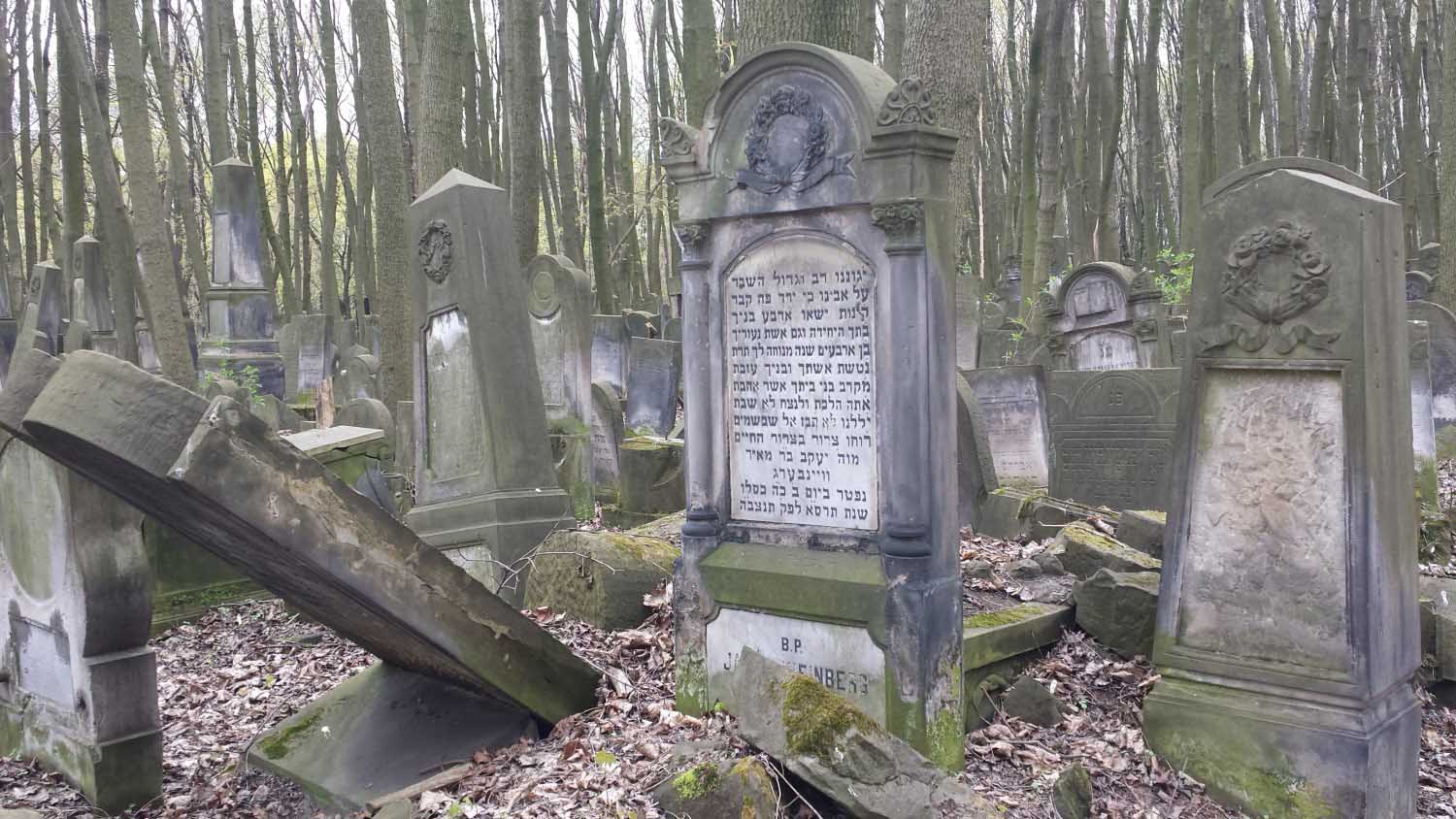
Jewish Cemetery in Warsaw
There are actually a number of Jewish cemeteries in Warsaw, but the one at Okopowa street is by far the largest. At 83 acres or the size of about 63 football fields, it is also one of the largest Jewish cemeteries in Europe and one of the few remaining Jewish cemeteries in Poland still in […]
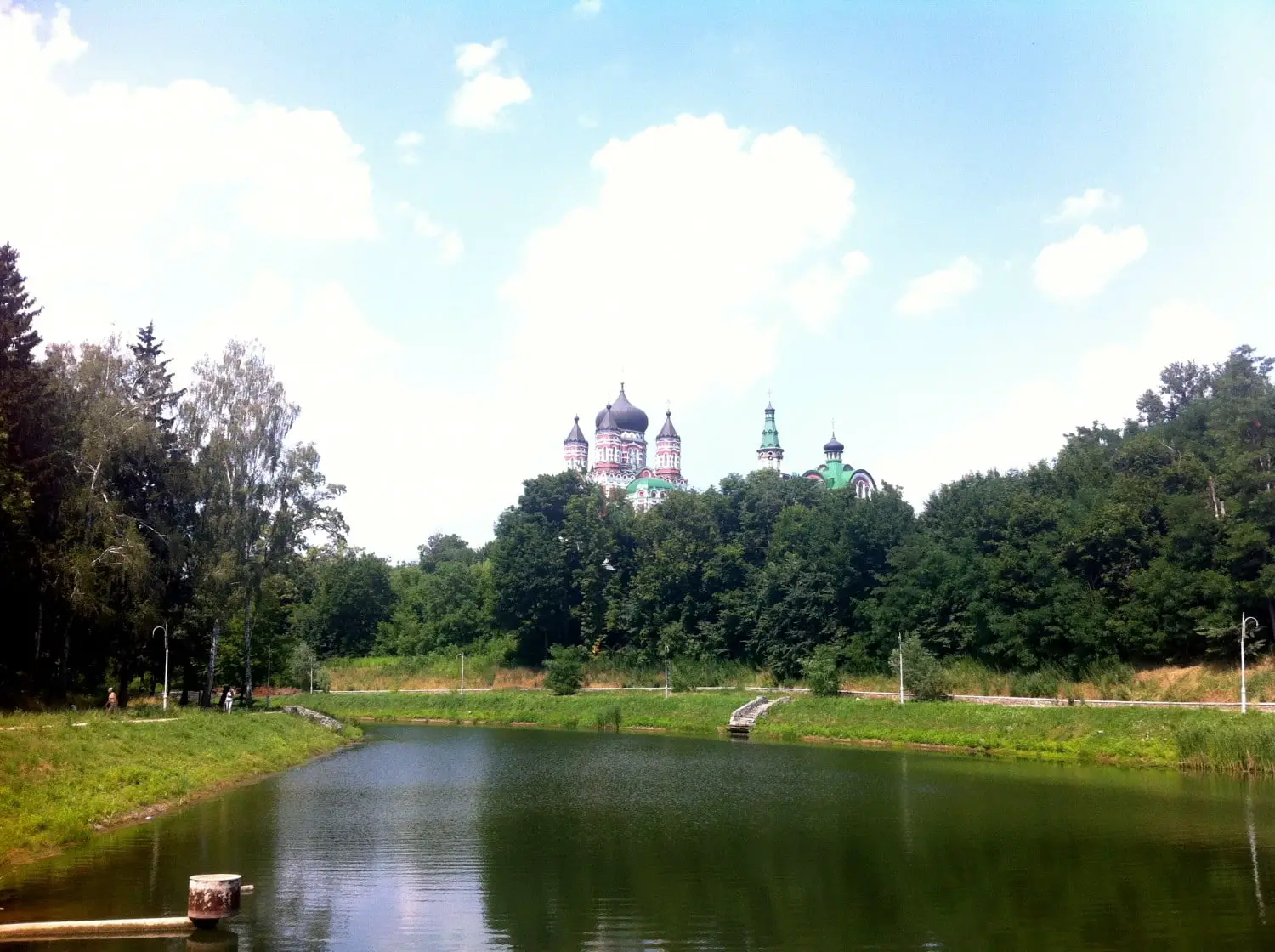
St. Panteleimon Cathedral & Feofaniya Park in Kyiv
Tucked away in the outskirts of Kyiv, in the Holiivs’ki district, lies St. Pantelemion’s Cathedral and Feofaniya Park. This place makes for a great day away from the hustle and bustle of the city. First, be sure to step inside and admire the beauty of St. Pantelemion’s Cathedral. When looking at the gorgeous iconography, don’t […]
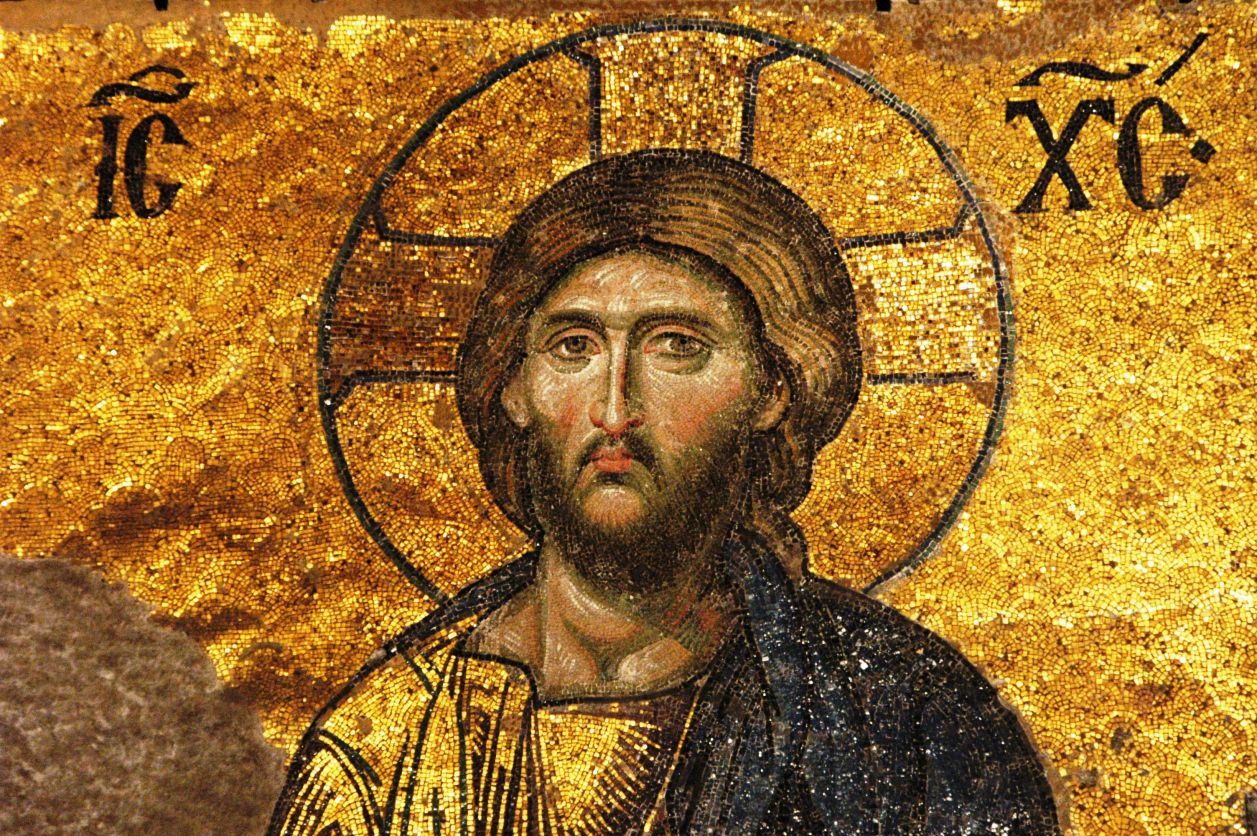
From Image to the Salvation of Mankind: Discovering Differences in Theology and Culture in a Comparison of Russian Orthodox and Roman Catholic Sacred Art
Hans Belting begins his discourse on the medieval imagery of Europe, Likeness and Presence: A History of the Image Before the Era of Art, with the statement: “A history of the image is something other than a history of art.”[1] A history of the image is a history of not only the images displayed in […]





